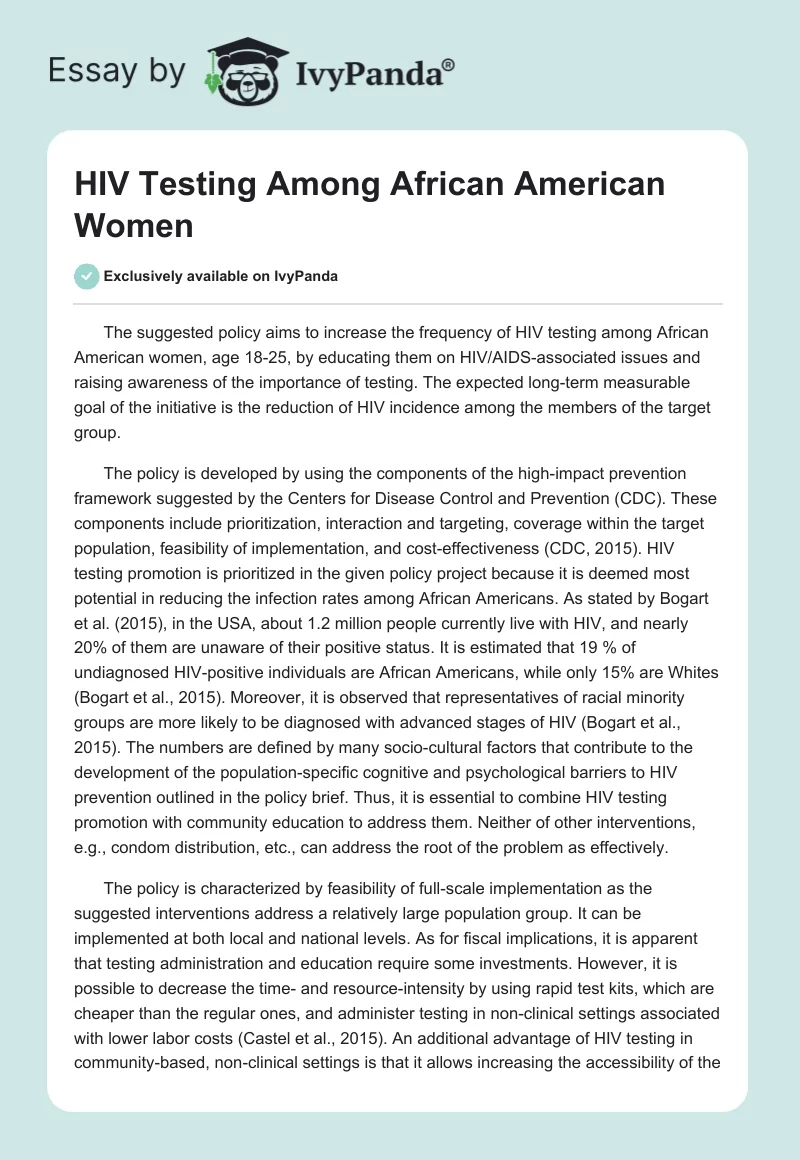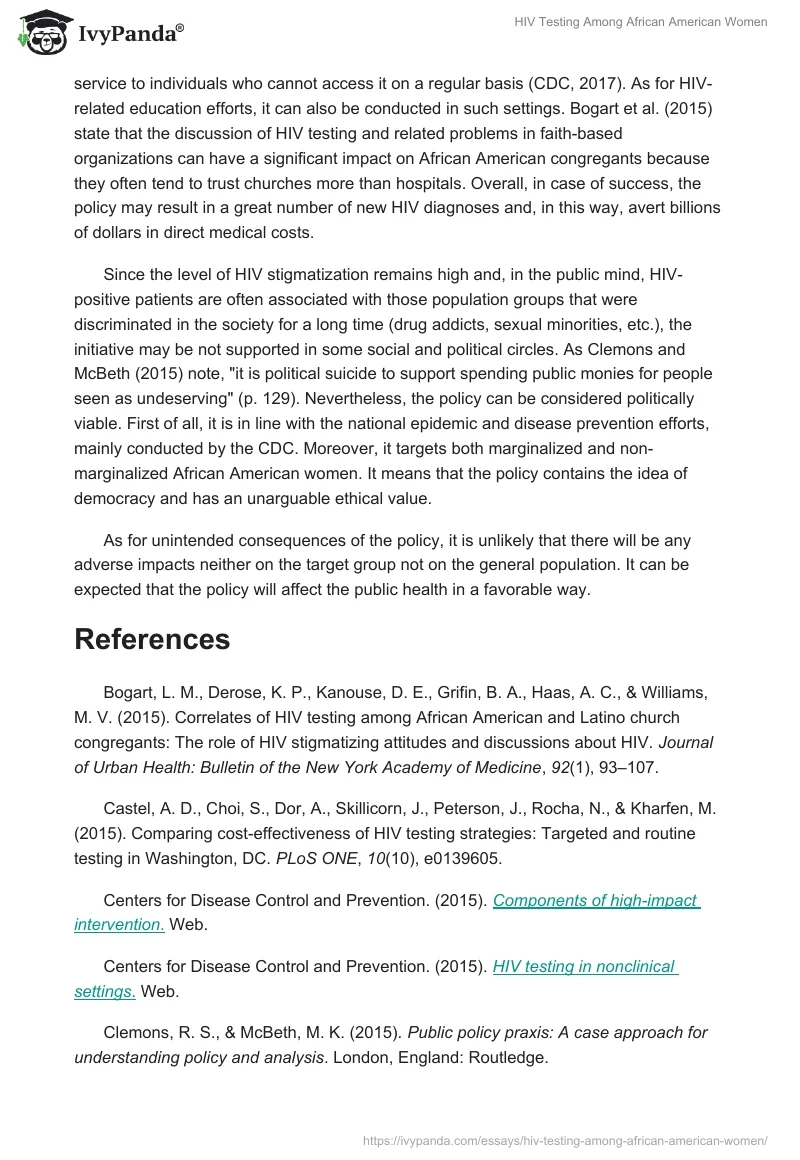The suggested policy aims to increase the frequency of HIV testing among African American women, age 18-25, by educating them on HIV/AIDS-associated issues and raising awareness of the importance of testing. The expected long-term measurable goal of the initiative is the reduction of HIV incidence among the members of the target group.
The policy is developed by using the components of the high-impact prevention framework suggested by the Centers for Disease Control and Prevention (CDC). These components include prioritization, interaction and targeting, coverage within the target population, feasibility of implementation, and cost-effectiveness (CDC, 2015). HIV testing promotion is prioritized in the given policy project because it is deemed most potential in reducing the infection rates among African Americans.
As stated by Bogart et al. (2015), in the USA, about 1.2 million people currently live with HIV, and nearly 20% of them are unaware of their positive status. It is estimated that 19 % of undiagnosed HIV-positive individuals are African Americans, while only 15% are Whites (Bogart et al., 2015). Moreover, it is observed that representatives of racial minority groups are more likely to be diagnosed with advanced stages of HIV (Bogart et al., 2015).
The numbers are defined by many socio-cultural factors that contribute to the development of the population-specific cognitive and psychological barriers to HIV prevention outlined in the policy brief. Thus, it is essential to combine HIV testing promotion with community education to address them. Neither of other interventions, e.g., condom distribution, etc., can address the root of the problem as effectively.
The policy is characterized by feasibility of full-scale implementation as the suggested interventions address a relatively large population group. It can be implemented at both local and national levels. As for fiscal implications, it is apparent that testing administration and education require some investments.
However, it is possible to decrease the time- and resource-intensity by using rapid test kits, which are cheaper than the regular ones, and administer testing in non-clinical settings associated with lower labor costs (Castel et al., 2015). An additional advantage of HIV testing in community-based, non-clinical settings is that it allows increasing the accessibility of the service to individuals who cannot access it on a regular basis (CDC, 2017).
As for HIV-related education efforts, it can also be conducted in such settings. Bogart et al. (2015) state that the discussion of HIV testing and related problems in faith-based organizations can have a significant impact on African American congregants because they often tend to trust churches more than hospitals. Overall, in case of success, the policy may result in a great number of new HIV diagnoses and, in this way, avert billions of dollars in direct medical costs.
Since the level of HIV stigmatization remains high and, in the public mind, HIV-positive patients are often associated with those population groups that were discriminated in the society for a long time (drug addicts, sexual minorities, etc.), the initiative may be not supported in some social and political circles.
As Clemons and McBeth (2015) note, “it is political suicide to support spending public monies for people seen as undeserving” (p. 129). Nevertheless, the policy can be considered politically viable. First of all, it is in line with the national epidemic and disease prevention efforts, mainly conducted by the CDC. Moreover, it targets both marginalized and non-marginalized African American women. It means that the policy contains the idea of democracy and has an unarguable ethical value.
As for unintended consequences of the policy, it is unlikely that there will be any adverse impacts neither on the target group not on the general population. It can be expected that the policy will affect the public health in a favorable way.
References
Bogart, L. M., Derose, K. P., Kanouse, D. E., Grifin, B. A., Haas, A. C., & Williams, M. V. (2015). Correlates of HIV testing among African American and Latino church congregants: The role of HIV stigmatizing attitudes and discussions about HIV. Journal of Urban Health: Bulletin of the New York Academy of Medicine, 92(1), 93–107.
Castel, A. D., Choi, S., Dor, A., Skillicorn, J., Peterson, J., Rocha, N., & Kharfen, M. (2015). Comparing cost-effectiveness of HIV testing strategies: Targeted and routine testing in Washington, DC. PLoS ONE, 10(10), e0139605.
Centers for Disease Control and Prevention. (2015). Components of high-impact intervention. Web.
Centers for Disease Control and Prevention. (2015). HIV testing in nonclinical settings. Web.
Clemons, R. S., & McBeth, M. K. (2015). Public policy praxis: A case approach for understanding policy and analysis. London, England: Routledge.


